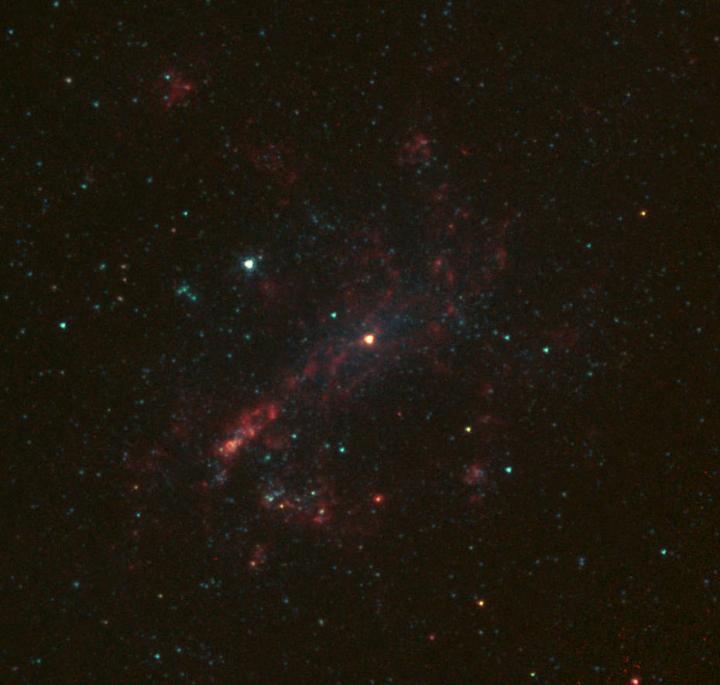The black hole at the center of a dwarf galaxy is way smaller than we thought

Astronomers found that the mass of the black hole at the center of the small galaxy NGC 4395 (pictured above) is just a 40th what researchers had predicted.
What they found: Located about 14 million light-years away from Earth, the black hole was a mere 10,000 times the mass of the sun, small by black hole standards and more than an order of magnitude smaller than some other previous estimates.
How they found out: According to the paper published Monday in Nature Astronomy, the research team was able to make this measurement using a technique known as reverberation mapping. This process observes the radiation that comes from the matter collected by the pull of the black hole, also known as an accretion disk. When the radiation is thrown off, it continues to travel outward, until it hits a gaseous area that generates a flash. The time between when it arrives at the region and when a flash is observed lets researchers estimate the size of the black hole.
Why it matters: Astronomers are attempting to measure smaller galaxies to better understand what happened when they formed. “Do these galaxies have black holes, and if they do, do they scale the same way as supermassive black holes?” says Elena Gallo, one of the authors of the paper. “Answering these questions might help us understand the very mechanism through which these monster black holes were assembled when the universe was in its infancy.”
Deep Dive
Space
How to safely watch and photograph the total solar eclipse
The solar eclipse this Monday, April 8, will be visible to millions. Here’s how to make the most of your experience.
How scientists are using quantum squeezing to push the limits of their sensors
Fuzziness may rule the quantum realm, but it can be manipulated to our advantage.
The race to fix space-weather forecasting before next big solar storm hits
Solar activity can knock satellites off track, raising the risk of collisions. Scientists are hoping improved atmospheric models will help.
Stay connected
Get the latest updates from
MIT Technology Review
Discover special offers, top stories, upcoming events, and more.